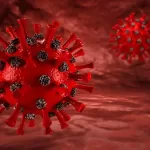
Protein complex structure BRCA2 critical to the repair of DNA solved
August 15, 2021The initials BRCA2 are most commonly associated with a gene associated with numerous cases of breast cancer, and the protein encoded by the BRCA2 gene is required for DNA repair.
Numerous cancers are characterised by the breakdown of this interaction. Now, researchers at the University of Michigan have determined the structure of a complex of two proteins—BRCA2 and MEILB2—that enables efficient repair in cells undergoing cell division, or meiosis. Their findings, which were published in the journal Nature Structural and Molecular Biology, have significant implications for cancer and infertility.
“We are aware of the abundance of BRCA2 mutations in cancer, but our findings suggest that the MEILB2-binding region of BRCA2 may be a hotspot for discovering mutations associated with infertility,” said study author and University of Michigan structural biologist Jayakrishnan Nandakumar, associate professor of molecular, cellular, and developmental biology.
Before germ cells undergo meiosis, DNA breaks occur in every chromosome. The breaks promote gene mixing, resulting in genetic diversity rather than identical copies of the parents. Each germ cell divides twice during meiosis, leaving each egg or sperm with only one copy of each chromosome. When egg and sperm combine, the embryo will have the correct number of chromosome pairs.
Prior to the first split, the germ cell’s chromosomes form a tight pair, and then each chromosome within the pair breaks and rejoins with pieces from its partner, a process called crossover. Then, all of these DNA breaks must be quickly repaired.
Consider a sandwich, explains Nandakumar. On top and bottom, the “bun” is composed of four identical copies of a protein called MEILB2, with the two BRCA2 proteins sandwiched in between. The MEILB2 protein sandwich transports the BRCA2 protein to the DNA break points precisely.
The researchers used X-ray crystallography to deduce the structure of this BRCA2 complex. The protein crystal is bombarded with X-rays during this process, and the patterns generated when the X-rays deflect off the crystal’s atoms enable the researchers to determine the location of each atom in the molecule’s three-dimensional structure. That would aid them in determining the BRCA2 protein’s relationship to the MEILB2 protein.
The initial step was crystallisation of the BRCA2 complex. Devon Pendlebury, a chemical biology graduate student in the Nandakumar lab, crystallised the human form of the BRCA2 complex after much trial and error. By a stroke of luck, the University of Michigan researchers were able to collect data at the Argonne National Laboratory just days before all research at the facility was to cease in March 2020.
The team determined the structure of the protein complex and how the two proteins interacted using X-ray crystallography data and additional experiments performed by MCDB graduate student Ritvija Agrawal. They report an unusual protein interaction.
To demonstrate their findings, they created mutant versions of BRCA2 and MEILB2 based on their structure and demonstrated how these mutants were unable to form this complex.
To further validate the structure of the MEILB2-BRCA2 complex, collaborators at the University of Gothenburg in Sweden introduced equivalent mutant forms into meiotic mouse cells. BRCA2 or MEILB2 mutants were unable to reach the DNA breaks that needed to be rejoined.
“While we knew BRCA2 was required for DNA recombination during meiosis, we had no idea how it performed this critical function efficiently,” Nandakumar explained. “MEILB2 is a component of this repair complex that is supposed to be present only in cells undergoing meiosis, but MEILB2 has been detected in a number of cancers. It is possible that MEILB2 is highly effective at ‘hijacking’ BRCA2 in cancer cells, preventing proper DNA repair.”
Without the presence of other factors found in meiotic cells, BRCA2 may not reach the DNA breakpoints in these MEILB2-positive cancers. With the structure of this complex in hand, Nandakumar suggests that researchers may now develop new strategies for restoring BRCA2 function in MEILB2-positive cancers.
Reference
Devon F. Pendlebury et al, Structure of a meiosis-specific complex central to BRCA2 localization at recombination sites, Nature Structural & Molecular Biology (2021). DOI: 10.1038/s41594-021-00635-0

















